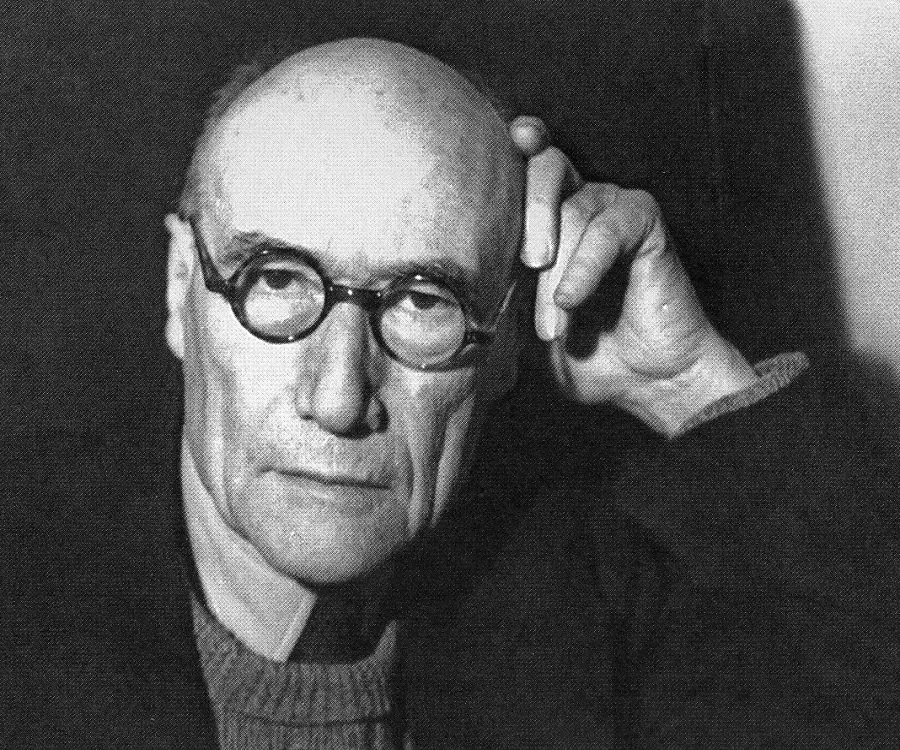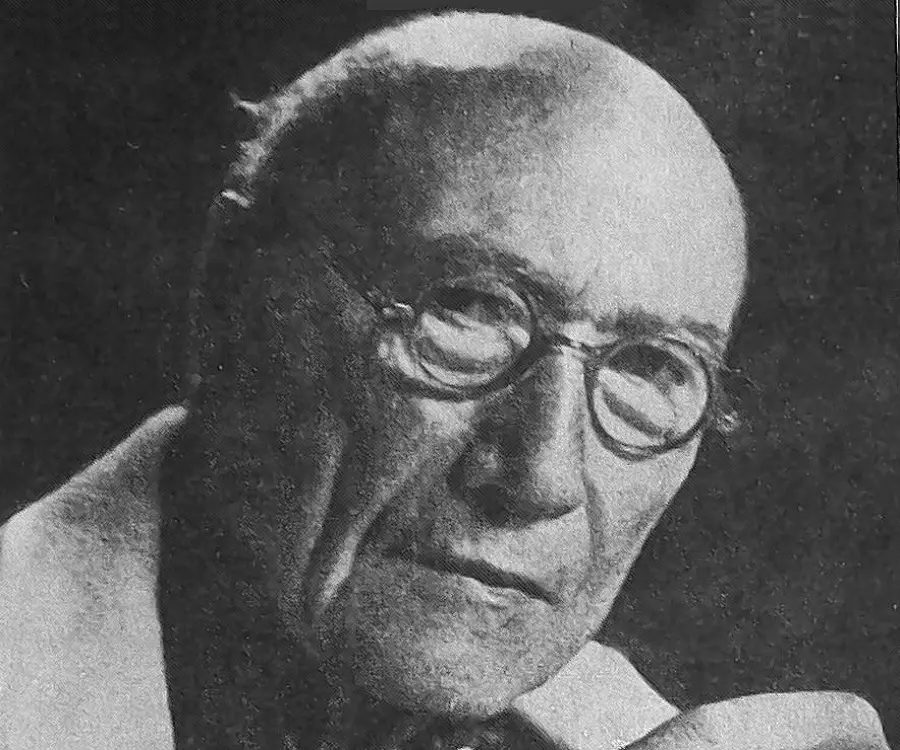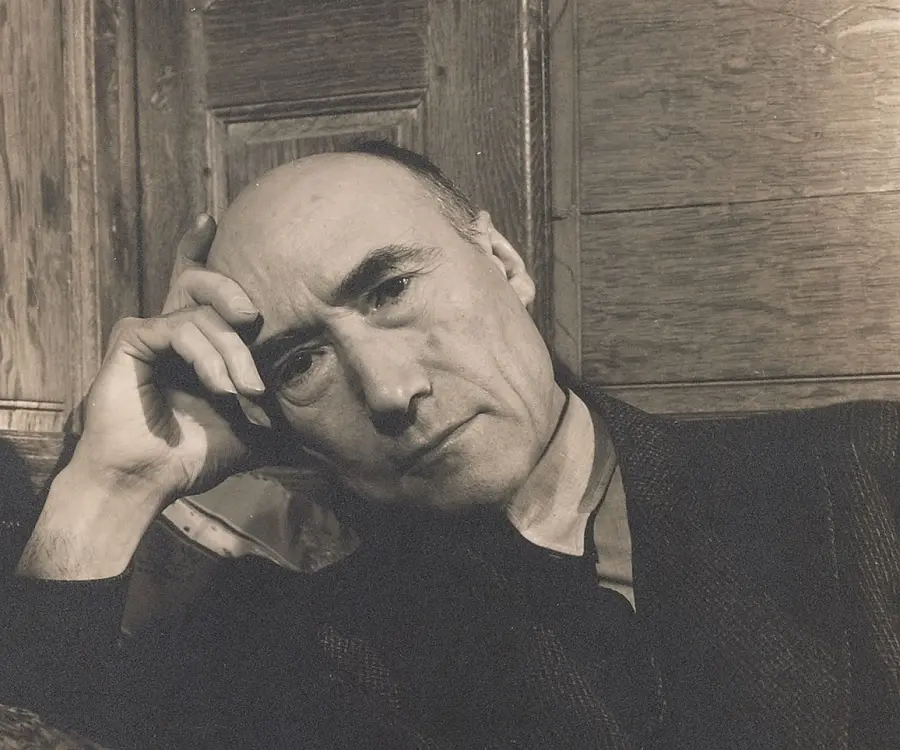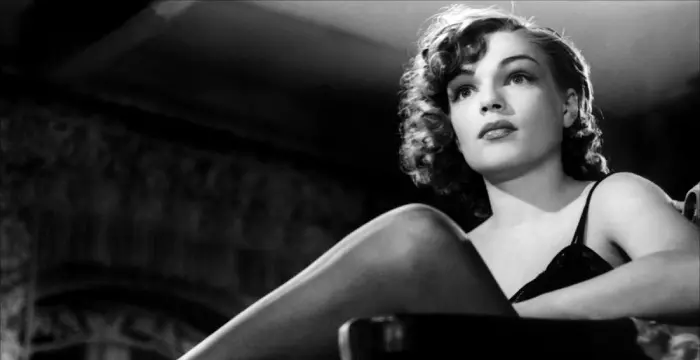
Andre Gide - Writers, Birthday and Family
Andre Gide's Personal Details
Andre Gide was a famous French author and a won Nobel Laureate
| Information | Detail |
|---|---|
| Birthday | November 22, 1869 |
| Died on | February 19, 1951 |
| Nationality | French |
| Famous | Writers |
| Spouses | Madeleine Rondeaux |
| Birth Place | Paris, France |
| Religion | Protestant |
| Gender | Male |
| Sun Sign | Scorpio |
| Born in | Paris, France |
| Died at Age | 81 |
// Famous Writers
Joyce Meyer
Joyce Meyer is a Christian author and speaker. This biography provides detailed information about her childhood, life, achievements, works & timeline
Temple Grandin
Temple Grandin is a well-known American writer, autistic activist and animal expert. This biography profiles her childhood, life, achievements, career and timeline
Tennessee Williams
Tennessee Williams was one of the greatest playwrights of the 20th century. This biography of Tennessee Williams provides detailed information about his childhood, life, achievements, works and timeline.
Andre Gide's photo
Who is Andre Gide?
Andre Gide was a French writer and moralist popular for his fiction and autobiographical works. He was a controversial figure and his life and views on moral, political and religious matters were better known than his literary works. As a young man emerging from the Mallarme circle of Symbolist poets, he wrote majorly for a small, discerning group of initiates. He presented to the public, the variance as well as the mergence between the two sides of his own personality ripped apart by the education and the constricted level of ethics on which the society runs. He also portrayed social justice in much of his works. Gide’s literary works are inseparable from human’s life as they reveal man’s true form, the one which is usually hidden behind the societal mask. While confining himself to prose, he derived much life and form from its substance and expressed his underlying thoughts indirectly with artistic discretion. Gide is modern as well as contemporary in his approach, providing lucidity and discursiveness to his writings. His definitions of art are shrewd yet still relevant and they always remain intact, lively and permanent. In politics, he impeded pursuing communism after a veil was lifted up from his eyes on his visit to USSR in 1936.
// Famous Scorpio Celebrities peoples
Teddy Zois
Teddy Zois is an American Musical.ly star and social media personality. Let’s have a look at his family and personal life including age, date of birth, net worth, and fun facts.
Kyla Cole
Kyla Cole is a Slovak glamour model and former television presenter. This biography profiles her childhood, life, modeling career, achievements and timeline.
Dominic Tracy
Dominic Tracy is an American YouTube Star. Let’s take a look at his family & personal life including age, date of birth, girlfriends, net worth, and fun facts.
Childhood & Early Life
He was born into a middle-class protestant family to a Law Professor at the University of Paris, Paul Gide and his wife Juliette Rondeaux. He received his early education at home before moving to the school.
At the age of 8, he enrolled in Ecole Alsacienne in Paris but his health conditions didn’t permit him to have a continual education. As a result, he was instructed by private tutors at home.
In 1880, his father left for heavenly abode and he was raised up by his mother who was devoutly concerned about him. He received tuition from his mother’s governess as well as private tutors.
Career
In 1891, he published his novel, Les Cahiers d'Andre Walter (The Notebooks of Andre Walter). It was well received by his friend, Pierre Louys, a French novelist and poet, who introduced him to the works of Stephane Mallarme, a major French Symbolist poet.
In 1893 and 1893, he embarked on a journey to North Africa where he became acquainted with the life and practices of the Arab world which liberated him from the restrictive and pointless Victorian convictions at social and sexual levels. His growing awareness of his homosexuality made him accept the need to follow his own impulses and the open atmosphere that offered him the much-needed encouragement.
In 1895, he met Oscar Wilde and Lord Alfred Douglas, in Algiers, who became his close friends and further encouraged him to accept his homosexuality without any hint of guilt.
In early 1896, he was elected as a Mayor of a commune in Normandy, La Roque--Baignard and became the youngest Mayor ever. In the same year, he completed his book, ‘Fruits of the Earth’, which was published a year later but not well-received. By the end of the First World War it became one of his most influential works.
In 1918, he met Dorothy Bussy, an English novelist and translator, who was his long-time friend. She assisted him in translating his works to English, being originally in French.
In 1920's, he gained much popularity and highly influenced writers such as Guillaume Apollinaire, Albert Camus, and Jean-Paul Sartre as well as several young writers of that time.
During July 1926 to May 1927, he travelled extensively through the French Equatorial Africa colony going to Middle Congo, Oubangui-Chari, Chad and Cameroun before returning to France. He penned down his travelling experiences in the journals called, ‘Voyage au Congo’ (Travels in the Congo) and ‘Retour du Tchad’ (Return from Chad). At that time, his books had a big impact on anti-colonialism movements in France.
In 1930s, he embraced communism for a brief period but his ideologies and perception regarding it received a severe blow when he was invited on a Soviet Union tour as a guest of the ‘Soviet Union of Writers’. He criticized communism in his book ‘Retour de L’U.R.S.S’ in 1936. He also contributed an essay in ‘The God That Failed’, a book which collected testimonies of several famous ex-communist writers and journalists.
In 1942, he left for Africa and resided in Tunis until the end of the Second World War. He wrote ‘Theseus’ there whose story showcased his realization of the value of the past.
Major Works
In 1908, he founded a literary magazine, ‘La Nouvelle Revue Francaise’ (The New French Review) along with Jacques Copeau and Jean Sclumber.
In 1923, he published a book on Fyodor Dostoyevsky, a Russian novelist, short-story writer and essayist. In the following year, with the publication of ‘Corydon’, he was greatly condemned. The book was based on homosexuality in which he defended pederasty.
In 1924, he published his autobiography, ‘Si le grain ne meurt’ (Unless the seed dies). It was based on those themes which obsessed him throughout his career and imbued his famous classical novels, ‘The Immoralist’ and ‘The Counterfeiters’.
Awards & Achievements
In June 1947, he was honored by the University of Oxford which conferred on him the ‘Doctor of Letters’, a higher doctorate degree for his outstanding achievement and original contribution to the writing.
In November 1947, he received the ‘Nobel Prize in Literature’ for his comprehensive and artistically significant writings in which human psyche were portrayed with keen psychological insight.
Personal Life
In 1895, he married his cousin Madaleine Rondeaux but the marriage was an unconsummated one due to his dissimilar sexual orientation. She died in 1938 and thereafter became the subject of his book ‘Et Nunc Manet in Te’.
In 1916, he began a relationship with 15 year old boy, Marc Allegret., who was the son of the best man at his wedding, Elie Allegret. He adopted Marc and fled to London along with him.
In 1923, he fathered a daughter with a much younger Elisabeth van Rysselberghe who was the daughter of his closest female friend Maria Monnom. He christened his daughter Catherine.
Trivia
His works were placed on the ‘Index Librorum Prohibitorum’ (Index of Forbidden Books) by Roman Catholic Church in 1952.
// Famous French peoples
Simone Signoret
Simone Signoret was a French actress who became the first French person to win an Academy Award. Check out this biography to know about her childhood, family life, achievements and other facts related to her life.
Jade Weber
Scroll down this bio to find out everything about French model Jade Weber. Be it fun facts, birthday, trivia or details of her personal and family life, you’ll find everything here.
Micheline Roquebrune
Micheline Roquebrune is a petite Moroccan-French painter best known as the third wife the legendary Scottish actor Sir Sean Connery. Check out this biography to know about her birthday, childhood, family life, achievements and fun facts about her.
Andre Gide's awards
| Year | Name | Award |
|---|---|---|
Other | ||
| 0 | 1947 - Nobel Prize in Literature | |
Andre Gide biography timelines
- // 22nd Nov 1869He was born into a middle-class protestant family to a Law Professor at the University of Paris, Paul Gide and his wife Juliette Rondeaux. He received his early education at home before moving to the school.
- // 1877At the age of 8, he enrolled in Ecole Alsacienne in Paris but his health conditions didn’t permit him to have a continual education. As a result, he was instructed by private tutors at home.
- // 1880In 1880, his father left for heavenly abode and he was raised up by his mother who was devoutly concerned about him. He received tuition from his mother’s governess as well as private tutors.
- // 1891In 1891, he published his novel, Les Cahiers d'Andre Walter (The Notebooks of Andre Walter). It was well received by his friend, Pierre Louys, a French novelist and poet, who introduced him to the works of Stephane Mallarme, a major French Symbolist poet.
- // 1893 To 1893In 1893 and 1893, he embarked on a journey to North Africa where he became acquainted with the life and practices of the Arab world which liberated him from the restrictive and pointless Victorian convictions at social and sexual levels. His growing awareness of his homosexuality made him accept the need to follow his own impulses and the open atmosphere that offered him the much-needed encouragement.
- // 1895In 1895, he met Oscar Wilde and Lord Alfred Douglas, in Algiers, who became his close friends and further encouraged him to accept his homosexuality without any hint of guilt.
- // 1895 To 1938In 1895, he married his cousin Madaleine Rondeaux but the marriage was an unconsummated one due to his dissimilar sexual orientation. She died in 1938 and thereafter became the subject of his book ‘Et Nunc Manet in Te’.
- // 1896In early 1896, he was elected as a Mayor of a commune in Normandy, La Roque
- // Baignard and became the youngest Mayor ever. In the same year, he completed his book, ‘Fruits of the Earth’, which was published a year later but not well-received. By the end of the First World War it became one of his most influential works.
- // 1908In 1908, he founded a literary magazine, ‘La Nouvelle Revue Francaise’ (The New French Review) along with Jacques Copeau and Jean Sclumber.
- // 1916In 1916, he began a relationship with 15 year old boy, Marc Allegret., who was the son of the best man at his wedding, Elie Allegret. He adopted Marc and fled to London along with him.
- // 1918In 1918, he met Dorothy Bussy, an English novelist and translator, who was his long-time friend. She assisted him in translating his works to English, being originally in French.
- // 1920 To 1929In 1920's, he gained much popularity and highly influenced writers such as Guillaume Apollinaire, Albert Camus, and Jean-Paul Sartre as well as several young writers of that time.
- // 1923In 1923, he published a book on Fyodor Dostoyevsky, a Russian novelist, short-story writer and essayist. In the following year, with the publication of ‘Corydon’, he was greatly condemned. The book was based on homosexuality in which he defended pederasty.
- // 1923In 1923, he fathered a daughter with a much younger Elisabeth van Rysselberghe who was the daughter of his closest female friend Maria Monnom. He christened his daughter Catherine.
- // 1924In 1924, he published his autobiography, ‘Si le grain ne meurt’ (Unless the seed dies). It was based on those themes which obsessed him throughout his career and imbued his famous classical novels, ‘The Immoralist’ and ‘The Counterfeiters’.
- // Jul 1926 To May 1927During July 1926 to May 1927, he travelled extensively through the French Equatorial Africa colony going to Middle Congo, Oubangui-Chari, Chad and Cameroun before returning to France. He penned down his travelling experiences in the journals called, ‘Voyage au Congo’ (Travels in the Congo) and ‘Retour du Tchad’ (Return from Chad). At that time, his books had a big impact on anti-colonialism movements in France.
- // 1930 To 1936In 1930s, he embraced communism for a brief period but his ideologies and perception regarding it received a severe blow when he was invited on a Soviet Union tour as a guest of the ‘Soviet Union of Writers’. He criticized communism in his book ‘Retour de L’U.R.S.S’ in 1936. He also contributed an essay in ‘The God That Failed’, a book which collected testimonies of several famous ex-communist writers and journalists.
- // 1942In 1942, he left for Africa and resided in Tunis until the end of the Second World War. He wrote ‘Theseus’ there whose story showcased his realization of the value of the past.
- // Jun 1947In June 1947, he was honored by the University of Oxford which conferred on him the ‘Doctor of Letters’, a higher doctorate degree for his outstanding achievement and original contribution to the writing.
- // Nov 1947In November 1947, he received the ‘Nobel Prize in Literature’ for his comprehensive and artistically significant writings in which human psyche were portrayed with keen psychological insight.
- // 1952His works were placed on the ‘Index Librorum Prohibitorum’ (Index of Forbidden Books) by Roman Catholic Church in 1952.
Andre Gide's FAQ
What is Andre Gide birthday?
Andre Gide was born at 1869-11-22
When was Andre Gide died?
Andre Gide was died at 1951-02-19
Where was Andre Gide died?
Andre Gide was died in Paris, France
Which age was Andre Gide died?
Andre Gide was died at age 81
Where is Andre Gide's birth place?
Andre Gide was born in Paris, France
What is Andre Gide nationalities?
Andre Gide's nationalities is French
Who is Andre Gide spouses?
Andre Gide's spouses is Madeleine Rondeaux
What is Andre Gide's religion?
Andre Gide's religion is Protestant
What is Andre Gide's sun sign?
Andre Gide is Scorpio











